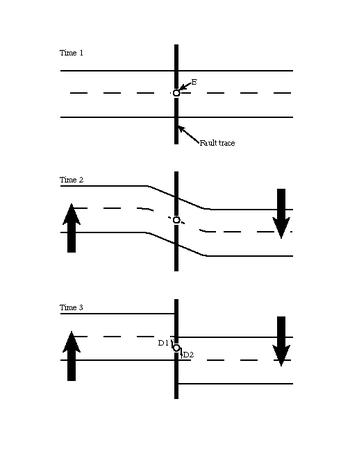earthquakes
INTRODUCTION
Measured using observation from seismometers.
At the earth's surface, earthquakes manifest themselves by shaking and sometimes displacement of ground.
Most earthquakes are part of a sequence, related to each other in terms of location and time.
CLASSIFICATION
Trigger
- Tectonic
- Volcanic
- Collapse
- Explosion
Tectonic earthquakes:
When two tectonic plates slide over each other, move past each other or collide with each other, tectonic earthquakes are generated. They are also the classical earthquakes.
Collapse earthquakes:
They occur in underground mines. They are caused by pressure induced within the rocks. This results in the collapse of the roof of the mine, which causes further tremors.
Volcanic Earthquakes
They occur before or after the volcanic activity.
The volcanic tectonic earthquakes occur usually after a volcanic activity has taken place.The magma that erupts during an earthquake leaves a space, to fill the space left by the magma the rocks move towards the space to fill it in, causing severe earthquakes. Most of the times after the release of lava, the lava falls on its vent blocking it, and not letting the pressure release. The retained pressure does not stay for long; it releases with a huge explosion. The explosion causes a severe earthquake, mostly of extremely high magnitude.
The long period volcanic earthquakes occur post a volcanic eruption. Few days before the great explosion, the change in heat of magma below the earth’s surface creates seismic waves, causing an earthquake.
Explosion Earthquakes:
They are caused due to nuclear explosions.
Depth
Intermediate focus earthquakes:
Hypocentre is at a depth of about 50-300 km.
Deep focus earthquakes:
Hypocentre is at a depth of about 300-700 km.
Most of these earthquakes originate at a depth of 500 to 700 km.
ORIGIN
Mechanism not well understood till 19th century.
Led to mythological associations.
God got angry, distracted? Duh
Misconception
Belief that ruptures caused ground shaking
instead of the other way round.
ELASTIC REBOUND THEORY
Provides an explanation for how energy spreads during earthquakes.
Rocks deform till their elastic limit.
Sudden movement snaps rocks back to their position and releases energy.

Most commonly accepted model of movement is no-couple model.
Periodicity in earthquakes is hypothesized, not verified yet due to lack of data.
Classification by magnitude
-
Great Earthquakes (M>8)
-
Major Earthquakes (7<M<=8)
-
Large Earthquakes (5<M<=7)
-
Small Earthquakes (3<M<=5)
-
Micro Earthquakes (M<=3)
-
Ultra-micro Earthquakes (M<=0)
FREQUENCY OF EARTHQUAKES
earthquakes
By aarti
earthquakes
- 366



